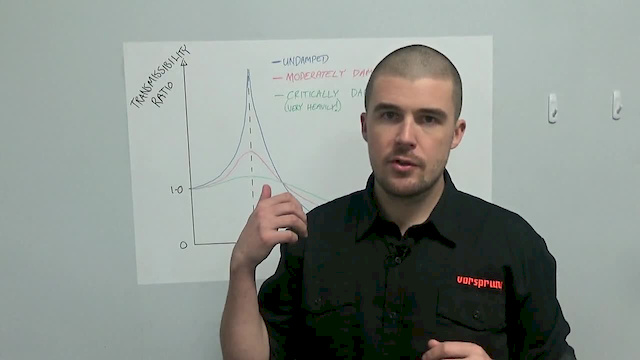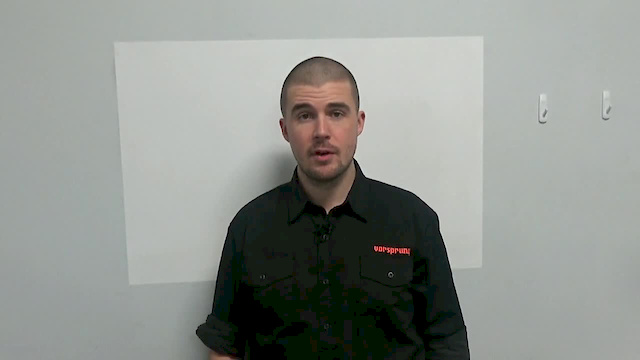VorsprungSuspension
- Member since Jul 13, 2013
- Male
-
 Whistler , British Columbia
Whistler , British Columbia - 1,008 Followers
- 18 Trailforks Points
Vorsprung Suspension - Aftermarket Suspension Upgrades Designed, Developed, Tested & Manufactured in Whistler, BC.
Please use email instead of Pinkbike inbox messages to contact us.
Recent

VorsprungSuspension dariodigiulio's article
Apr 22, 2024 at 20:08
Apr 22, 2024
First Look: Vorsprung's New Telum Coil Shock
@foggnm: all those shocks are solid units in their own ways, but in short:
vs a DHX2: adjustable HBO, custom tuned, more robust wiper, custom valved rebound so no need for (or gremlins in) the HSR adjustment, stronger shaft. As well as a few other things we don’t need to say.
vs a SDLX: much lower friction, custom tuned, no orifice HSC adjustment, more robust HBO adjuster retention.
vs Ohlins: adjustable HBO, custom tuned.
vs literally everyone: computed custom tune via our online tuning hub that is specifically calculated for you, your frame’s kinematics, your preferences and a number of other parameters that makes it substantially more thorough than anything else… AND if we get it wrong and you still don’t like it, can be retuned quickly and easily (as in, sub 5 minutes) by any trained Vorsprung tuner. Training is online and will be provided to any competent shop or suspension workshop who wants it, free of charge, so if you ask your favourite local shop to become a dealer and take the training, then buy through them, you’re a trip to the LBS away from a shock retune in a worst case scenario.

VorsprungSuspension dariodigiulio's article
Apr 20, 2024 at 7:34
Apr 20, 2024
First Look: Vorsprung's New Telum Coil Shock
@mikelee: yes, TF Tuned will be distributing them in the UK.

VorsprungSuspension dariodigiulio's article
Apr 20, 2024 at 7:34
Apr 20, 2024
First Look: Vorsprung's New Telum Coil Shock
Can’t recall how firm the Jade X is but it’s reasonably firm (enough that the ride height is higher) and has a blowoff to prevent damage - doesn’t prevent sag altogether though, it’s acting on the damper not the spring.

VorsprungSuspension dariodigiulio's article
Apr 19, 2024 at 18:52
Apr 19, 2024
First Look: Vorsprung's New Telum Coil Shock
https://vorsprungsuspension.com/products/telum for anybody interested, we are now accepting pre-orders.

VorsprungSuspension dariodigiulio's article
Apr 19, 2024 at 18:51
Apr 19, 2024
First Look: Vorsprung's New Telum Coil Shock
There are visual similarities with the black/red/blue colorways for sure. Internally though, other than being a twin tube shock, everything is different.

VorsprungSuspension dariodigiulio's article
Apr 19, 2024 at 18:49
Apr 19, 2024
First Look: Vorsprung's New Telum Coil Shock
Servicing should be pretty run of the mill. Nothing too crazy involved.

VorsprungSuspension dariodigiulio's article
Apr 19, 2024 at 18:47
Apr 19, 2024
First Look: Vorsprung's New Telum Coil Shock
Already in progress!

VorsprungSuspension dariodigiulio's article
Apr 19, 2024 at 18:47
Apr 19, 2024
First Look: Vorsprung's New Telum Coil Shock
We aren't advocating that people do it on the bike specifically (it is handy for racers between practice laps though), it's more that it's THAT easy that such a thing is possible. If a rider for whatever reason doesn't like the tune we've given them, it's a couple of minutes to rectify rather than a big deal.

VorsprungSuspension dariodigiulio's article
Apr 19, 2024 at 17:23
Apr 19, 2024
First Look: Vorsprung's New Telum Coil Shock
Our original protos had both, but we removed the HSR. If you know what you’re doing with the difference between HSR and LSR and you have a dyno to properly understand it then it can be somewhat useful. However, it very clearly is NOT well understood by 99.9% of riders, and within the rebound velocity range there is an enormous overlap between the effects of the low and high adjusters. Given that the shock valving is custom tuned - and very easily retuned (Sheeep in Israel can take care of that if required) - it didn’t make sense to complicate setup further in our eyes.

VorsprungSuspension dariodigiulio's article
Apr 19, 2024 at 16:54
Apr 19, 2024
First Look: Vorsprung's New Telum Coil Shock
@Vikingdude: you are correct on all counts. We didn’t want to be fixing broken stuff from other companies while simultaneously selling a competing product, as there would be a conflict of interest between our obligations to positively represent other brands that we’re servicing and our interest in selling our own shocks. That wouldn’t work well for the customer, the other brands in question or us.
36,101 views
84 Photos
206,107 views
23 Videos
44 Blog Posts
- Vorsprung Announces Smashpot Coil Conversion Kits for Öhlins RFX36 m.2 Feb 28, 2022 – Comments: 54
- THE FUTURE IS ALREADY HERE...sort of - Tuesday Tune Ep 33 (Electronic Suspension) Dec 1, 2021 – Comments: 0
- Vorsprung Suspension Launches Dedicated Service Centre Apr 14, 2021 – Comments: 0
- Vorsprung Introduces the Secus Air Spring System Jul 30, 2020 – Comments: 302
- Inside the new Fox 38 - Tuesday Tune 32 May 5, 2020 – Comments: 5
- The Wednesday Tune 29 - The Meaning of Grip Apr 1, 2020 – Comments: 9







